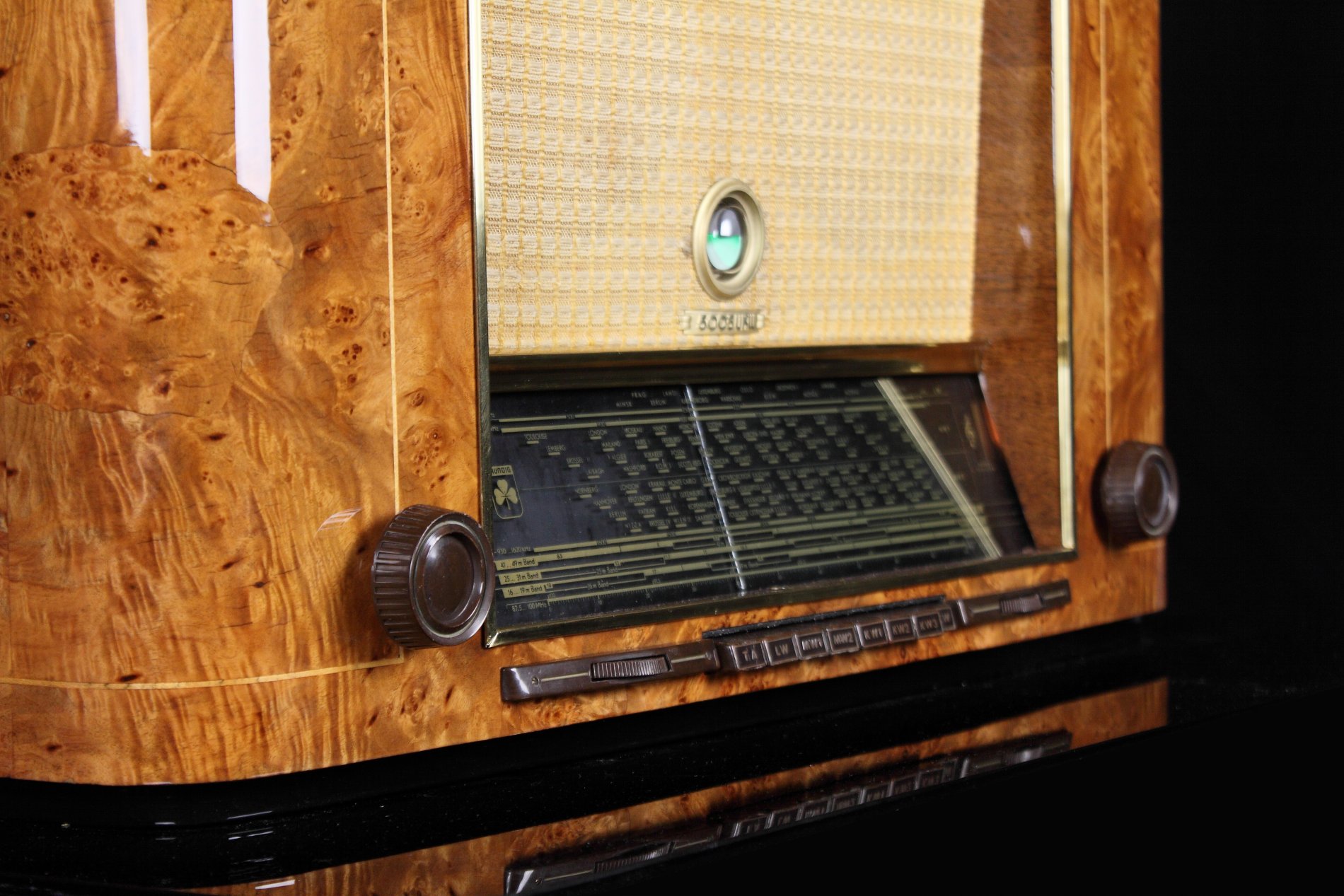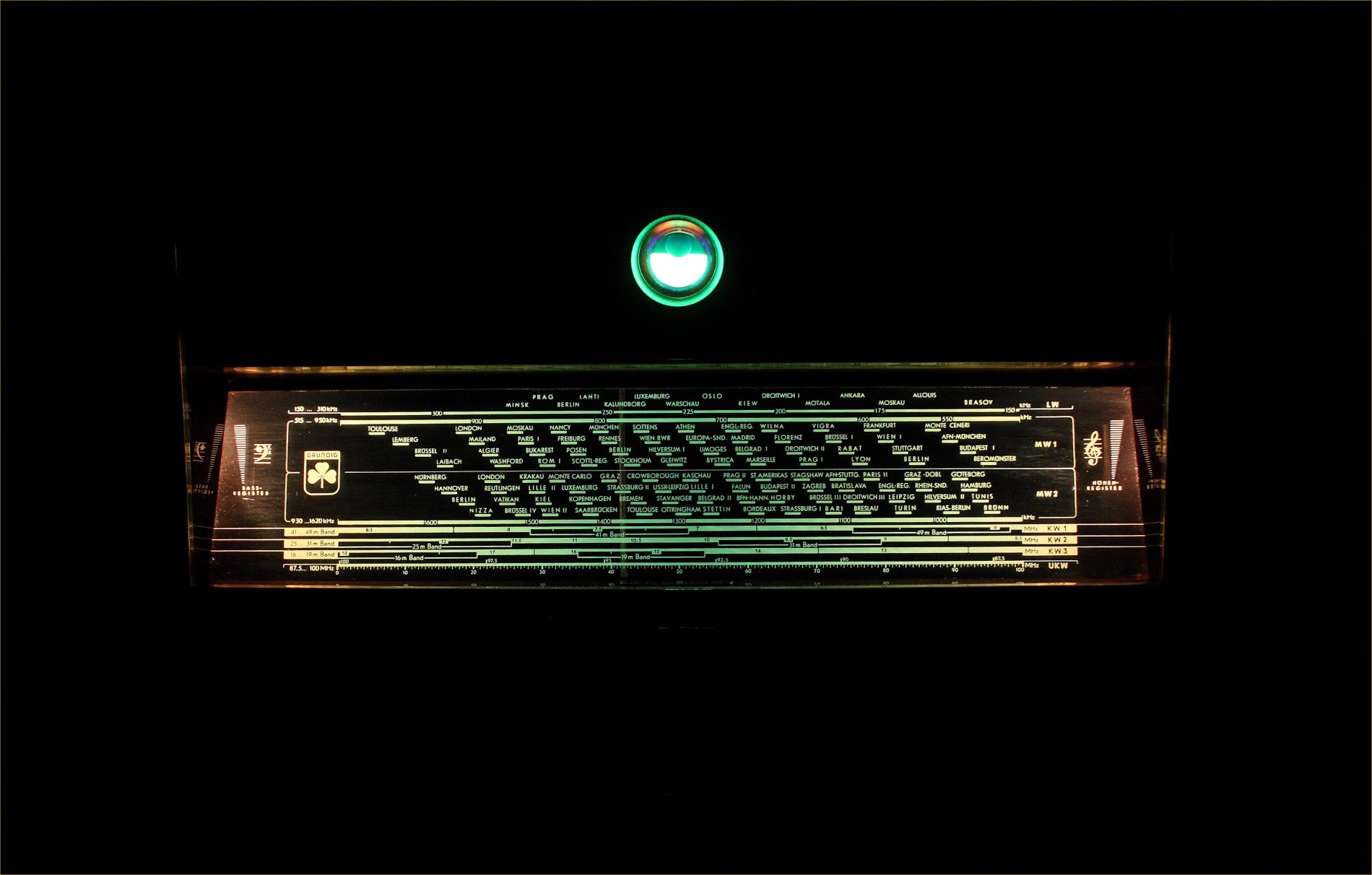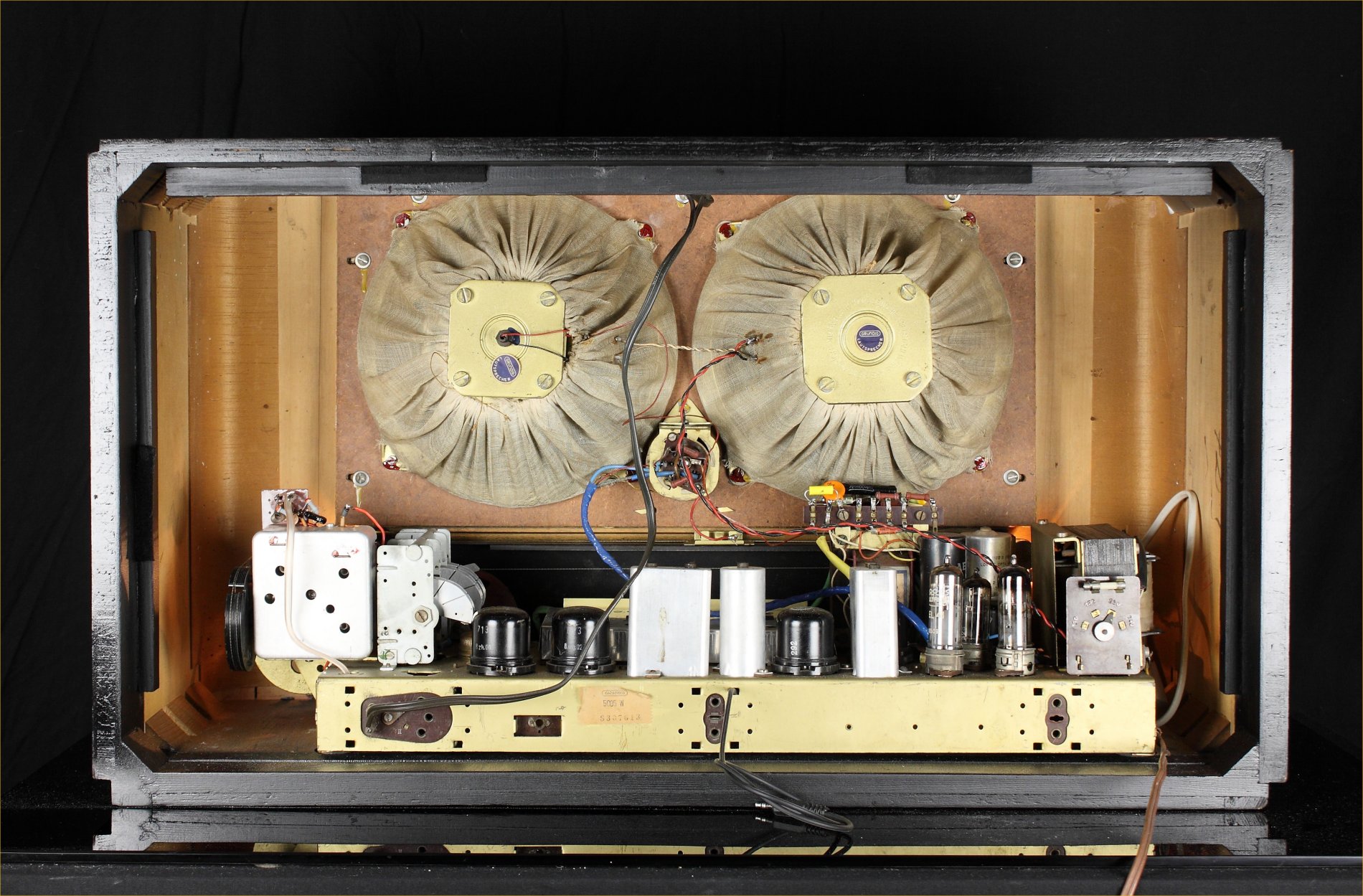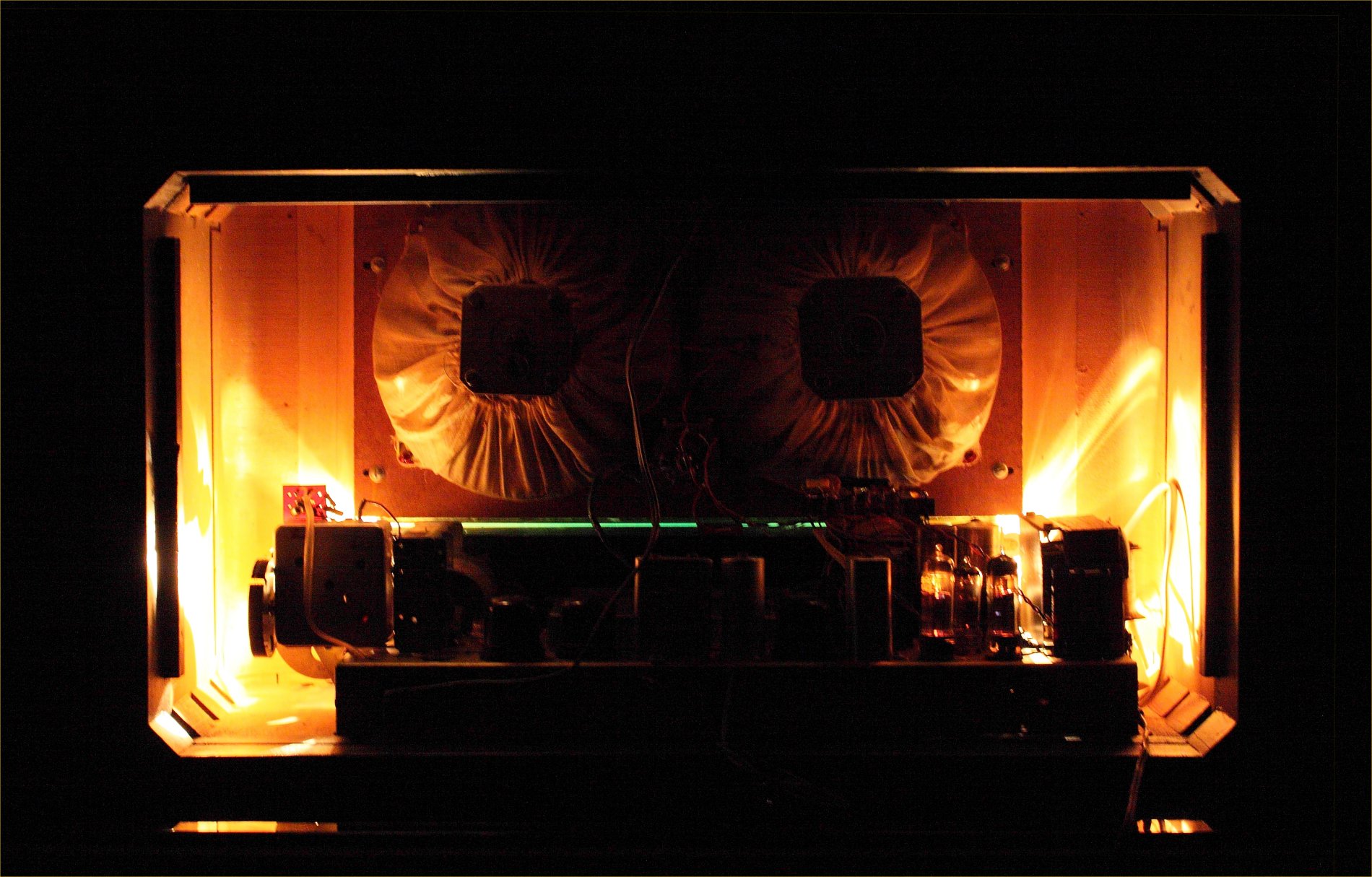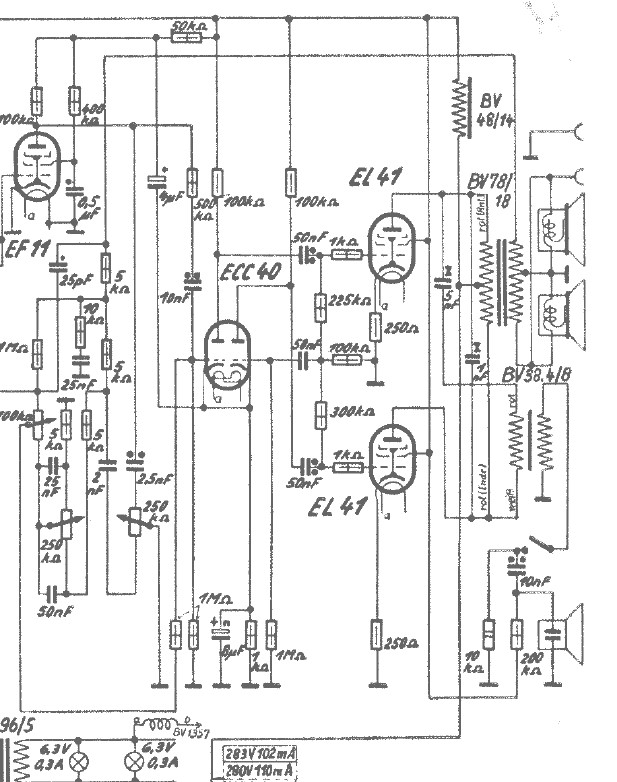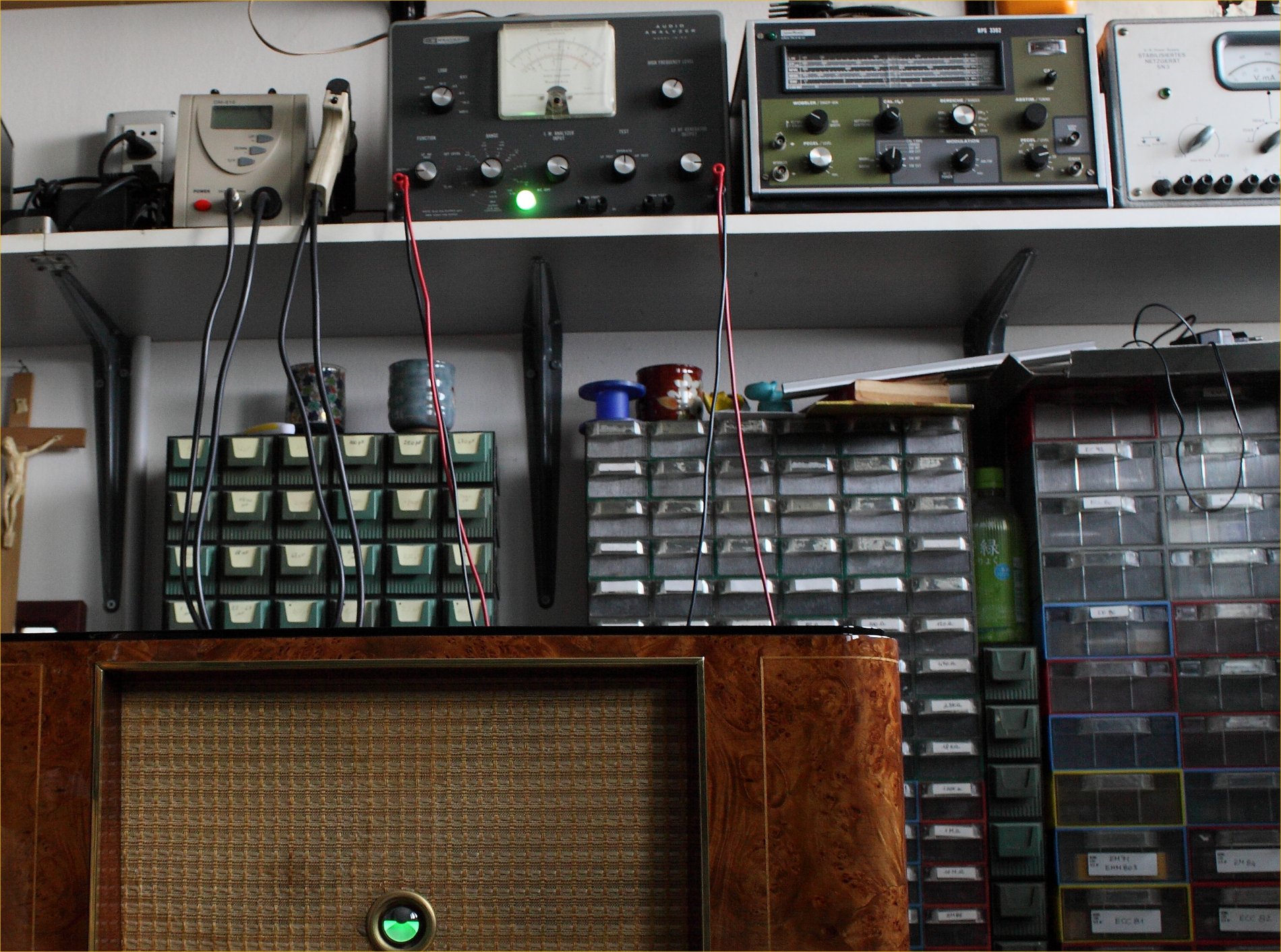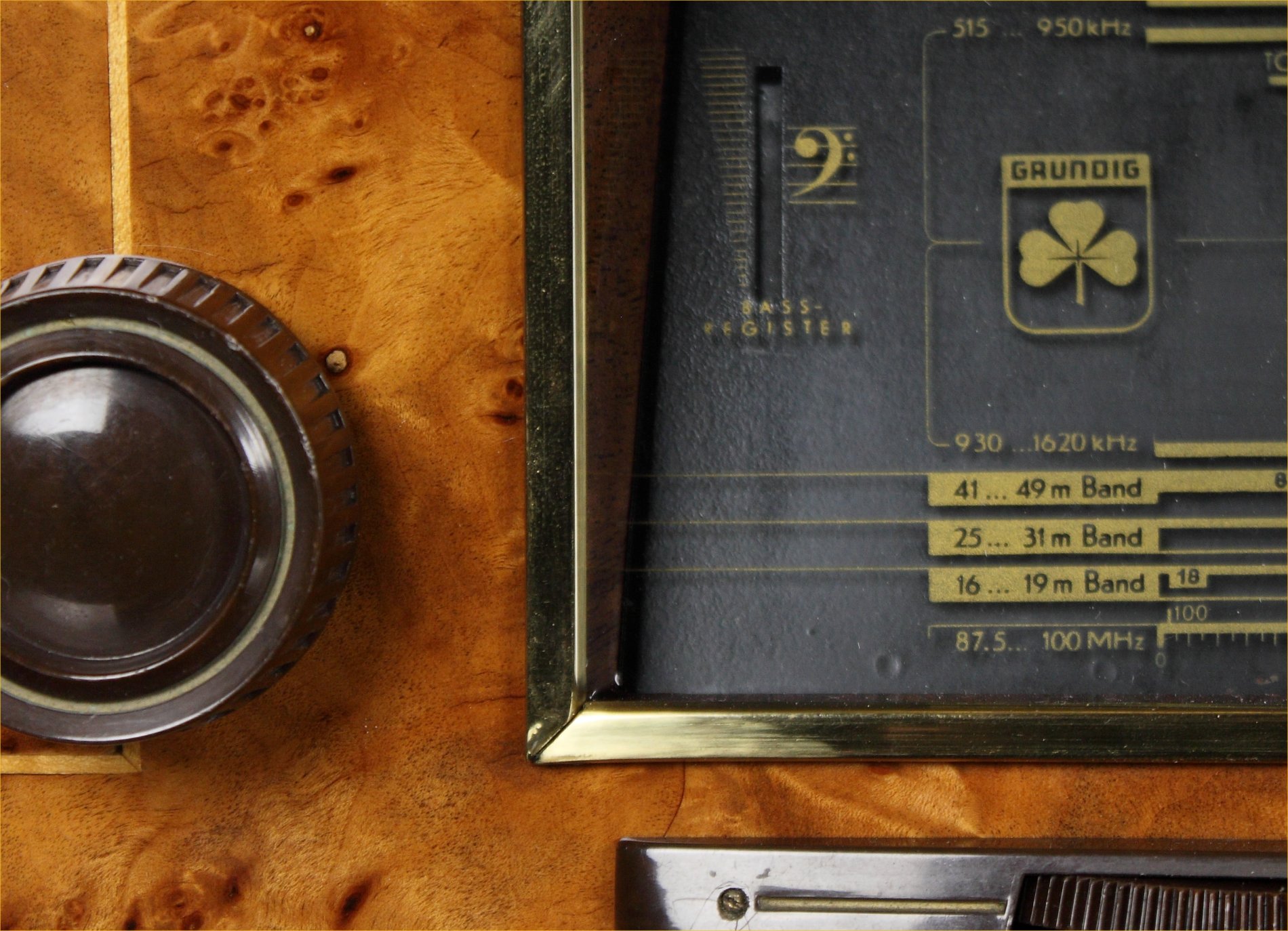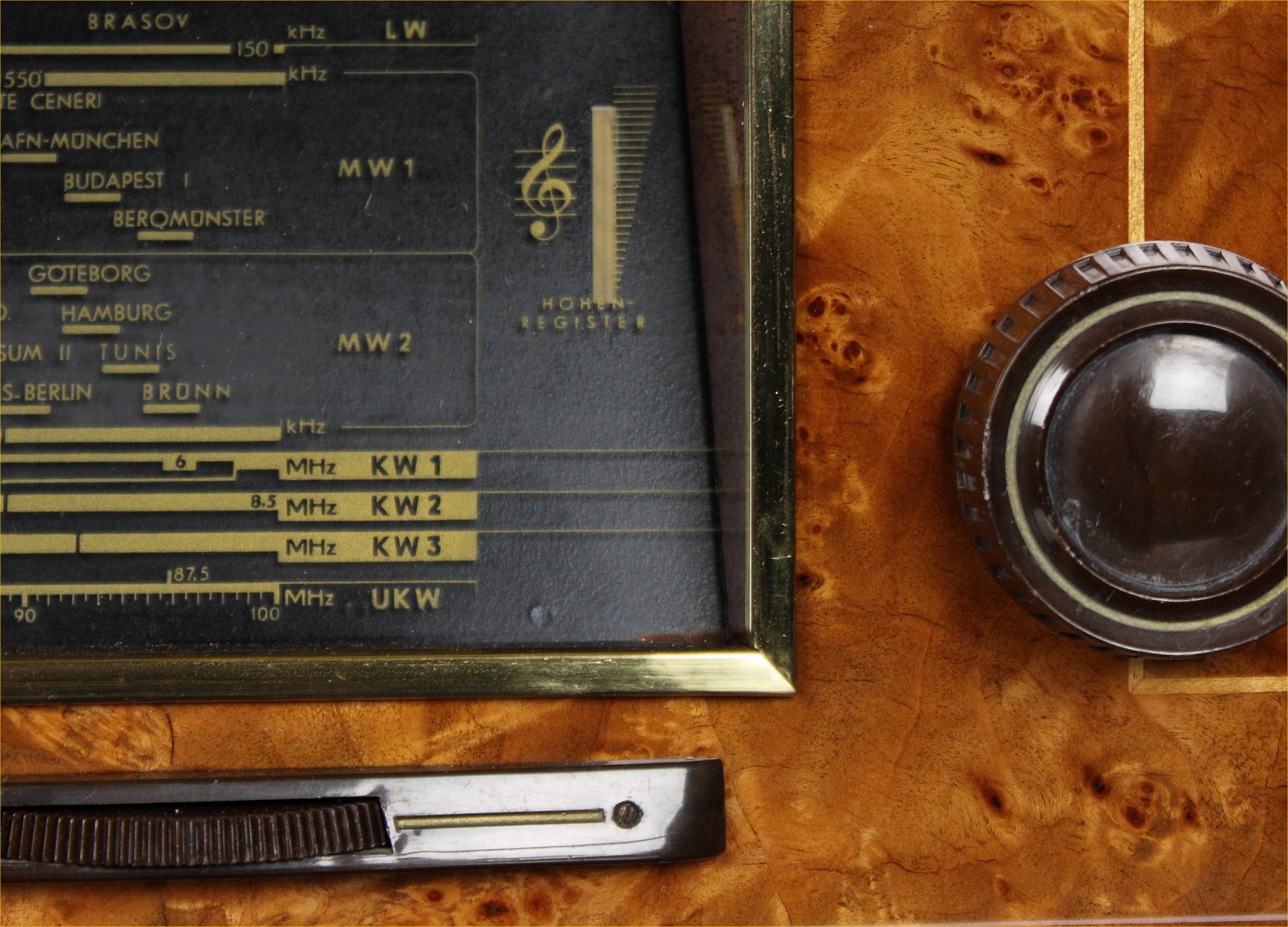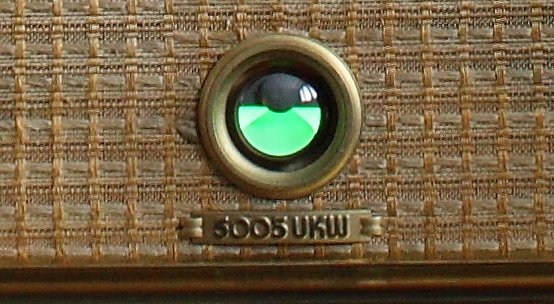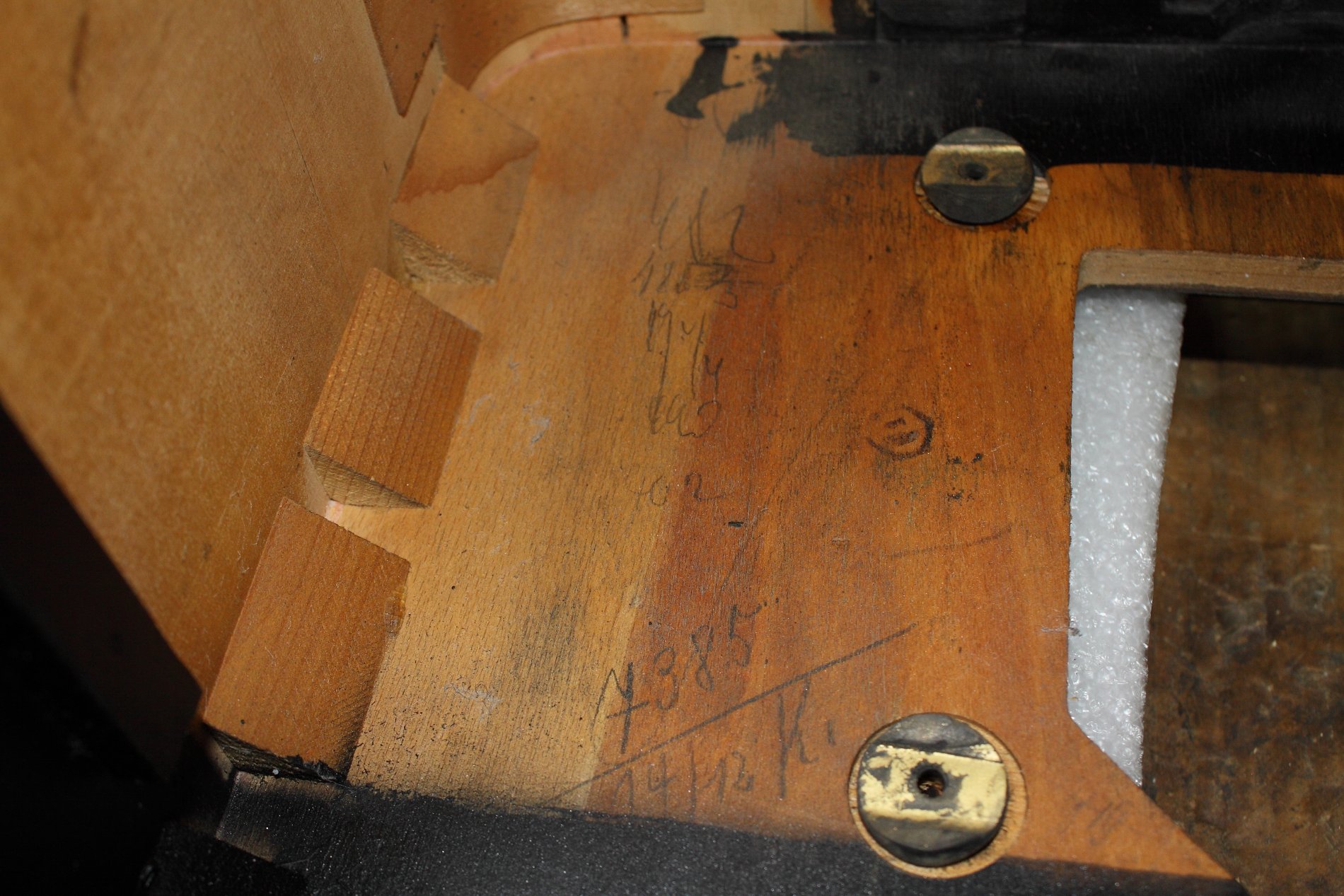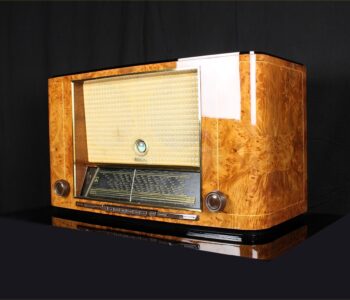 5005w - cn
5005w - cn
Grundig 5…
- by giovanni
Grundig 5005W enhanced
Also this reviews will be accompanied by a section with graphs of technical measures of the most important parameters.
There is no such thing anywhere else, as far as I know. Not even the manufacturers themselves detailed the technical features of their own devices at this level.
This new section has been developed for an objective comparison of different devices.
In order to avoid interpreting the measurements incorrectly, it is very important to read the warnings carefully the first time.
The Grundig 5005W was the progenitor of a new line of Grundig radios model. The 5005W line will be followed, with some modifications, by the 5010, the 4010 and other less and less prestigious series.
From the previous top of the range model, the Spitzen-Super UKW 495W inherits the beautiful full-range speakers, one of which is equipped with a coaxial electrostatic tweeter.
There are also many mechanical elements in common with the 495W, the chassis has a very similar setup as does the high frequency group and the variable capacitor, the keyboard and much more. The tuner section is instead more elaborate, sensitive and selective and the low frequency section has completely changed.
The FM converter stage is interesting. Unlike the usual stages composed of the classic ECC85 double triode (specially designed for this), an ECF12 pentode/triode was used on the 5005W. The pentode section is used as an antenna amplifier and is very quiet for a pentode. The triode acts as an AF oscillator. There is then a further medium frequency amplifier pentode, an EF15, before entering the grid of the ECH11 amplifier/mixer.
The low frequency stage is an excellent example of a Push-Pull amplifier, with two EL41s, the most powerful compact tubes at the time.
The phase inverter stage consists of a double triode Ecc40 in "Anode follower" configuration. Also in this case the characteristics of the tube are important. To have correct driving of the two final EL41s, which work in Push-Pull, one on the positive half-waves and one on the negative half-waves, it is advisable to check the signal present on the two grids of the final pentodes. The configuration of the inverter might make you think that the two triodes of the ECC40 work symmetrically, but this is not the case. The first triode works as a preamplifier while the second has only the purpose of inverting the signal, indeed, it has a slightly negative amplification. The advantages of this type of inverter are the high voltage available at the output to effectively drive the finals and the high rate of internal feedback which guarantees a high linearity of response compared to other types of cheaper inverters.
The counter-reaction is moderate, and affects the response curve. The resulting sound is very open, with great presence in the mid and high tones and sufficiently damped bass.
The cabinet is very robust and free of vibrations and resonances.
The speakers:
There are three speakers, all on the front.
These are two full-range cones of 25 cm each and a coaxial electrostatic tweeter which is inserted when the TA button or the UKW/FST button is pressed.
The advantage of having two separate full-range speakers is that for the same amount of air moved, the cones and the voice coil support are much lighter to move, so each speaker is much faster and more responsive. All this translates into more responsive and muffled bass and without serious resonances.
The die-cast baskets ensure the mechanical rigidity of the speaker itself, therefore again reduction of resonances and greater efficiency of the transducer (no force is dissipated in the vibration of the basket).
The entire frequency range is sent to the full-range speakers and the high part is cut mechanically.
The front canvas covering the speakers is never completely transparent from an acoustic point of view.
For this reason the only way to obtain maximum performance from the appliance is to eliminate it.
We can build a false frame in which the original canvas has been installed. This frame attaches to the speaker panel with magnets.
In this way it is possible to detach it when you want to listen to music with maximum transparency and put it back in its place when the radio is at rest to protect the speakers from dust and to restore the original aesthetic appearance of the device.
All this translates into exciting dynamics, brilliance of sound, lack of canvas oscillations in the presence of low frequencies, making listening to this beautiful device very realistic and pleasant.
The first song is the famous Moanin' written and arranged by Charles Mingus. There are actually two different jazz classics called "Moanin'." Both are blues-based songs with gospel music influences. Both evoke, in different ways, a sense of pain but also a sense of exuberant life.
The song was recorded in 1959, the group members included four sax players, John Handy, Jackie McLean, Booker Ervin and Pepper Adams, two trombones, Jimmy Knepper and Willie Dennis, Horace Parlan on piano, Dannie Richmond on drums and Mingus on bass .
The original lyrics of Moanin', by Jon Hendricks and known on the popular album by Art Blakey and the Jazz Messengers, begin like this:
I'm alone and crying the blues
I'm so tired of paying the dues
Everybody knows I'm moanin'
'Cause of all I the trouble I see
Life's a loosing gamble to me
Everybody knows I moanin'
And I pray, really and truly pray
Somebody will come and bring me relief
The second song is "Smooth Operator" published by Sade in 1984. It was the song that made Sade famous in the USA. The song appears on her debut album, Diamond Life. "Smooth Operator" is about a charming con man who seduces high society women into getting money from them and breaking their hearts.
Despite the cold-hearted lyrics, this song is also often used in cinema in scenes of a romantic encounter.
An interesting curiosity: the music producer Robert Millar recorded the song for a demo to present to the record company to obtain a contract. Epic Records liked it so much that he released it exactly like that, without having it recorded again in the studio.
The third song is Walk On The Wild Side by Lou Reed. The song is very well known. From a musical point of view it is rather simple, supported by a bass line with repetitive "Du du du" choruses and an interesting baritone saxophone solo. The text, however, is the most provocative one could have imagined at the time. It talks about the gender world and male prostitution. Each verse introduces a new character, Holly (Holly Woodlawn), Candy (Candy Darling), Little Joe (Joe Dallesandero), Sugar Plum Fairy (Joe Campbell), and Jackie (Jackie Curtis). All cronies of the Andy Warhol Factory, as well as Lou. A cross-section of the Big Apple's underground.
The fourth song is Yakety Sax written by saxophonist Boots Randolph and guitarist James Q. "Spider" Rich. The song became famous as the closing song on The Benny Hill Show. It is a piece of "instrumental novelty song", a light piece of music which is usually, but not in this case (instrumental), accompanied by a fun and topical text. The song is inspired by Yakety Yak recorded in 1958 by the Coasters from which it took its title. Yakety Yak is a slang expression that means to talk for a long time for nothing, to chat in vain.
And finally, to really put the device to the test, the final part of the drum solo from Led Zeppelin's Moby Dick. In this piece the skill of John Henry "Bonzo" Bonham is expressed at the highest levels. Artistic heir to Ginger Baker, Bonham had developed spectacular right hand/left hand/foot sequences, which were particularly exciting for him in live concerts. The piece is really difficult and requires great strength, and probably also great anger. Bonham's life was filled with fights, trashed hotel rooms, drinking, orgies, except when he was at home in his cottage in Worcestershire. Bonham died at the age of 32 after choking on his own vomit one drunken evening.
-
BLUETOOTH
Bluetooth receiver embedn -
CONNESSIONE A DISPOSITIVI DIGITALI
Each radio is equipped with a cable for connection to any digital device.n
TUBESOUND IMPROVEMENT
– Bluetooth receiver embed – The unit is equipped with a BLUETOOTH receiver powered directly by the receiver power supply. This makes it possible to control the amplifier from any external digital device as an IPAD, a Smartphone, or a sophisticated multimedia station. So you can hear your preferred web station or your lossesless file without cables on the room. Wireless Receiver can be equipped upon requests.
– Multi Platform Connection – A customized adaptation cable to connect any digital device as Iphone, Smartphone, Laptop, CD Player etc. will be provided with this radio. This special cable suits the different impedances between the modern equipment and the receiver. Furthermore the two stereo channels flow into one without increasing the load to the input unit.
HISTORY
1930 - At 22 years old Max Grundig begin a radio repair business.
1939 - The II world War start. Grundig works primarily for the Wehrmacht and repair of telecommunication equipment.
1945 - Immediately after the war, the demand for repair work was very great. Max Grundig built the first two Grundig appliances: the Tubatest tube tester and the Novatest testing device.
1947 - Start the sale of a kit radio, the Heinzelmann. The unit is the basis of success, sold more than 15,000 pieces.
1950 - Very high frequency (VHF) is introduced to Germany and places new demands on the industry. Grundig launches the 380 W on the market.
1952 - The first television channel starts up in Germany. After intensive research, Grundig launches the FS 080 onto the market. In the same year the first portable tape recorder Reporter 500 L is created.
1956 - After a lot of radio produced with progrssively high performances was produced the Concert Radio 5080 equipped with an equaliser, which has five controls and a visual display.
1965 - A new factory is established in Braga, Portugal. The Satellit 205 is one of many appliances in the Satellit series. This product marks the beginning of Grundig production of high-quality global receivers.
1970 - The Audiorama 7000 Hi-fi was produced, it has twelve dynamic speaker systems in one speaker.
1976 - The Reel Tape Recorder TS 1000 is equipped for semi-professional use.
1980 - The slim-line Hi-fi Tuner ST 6000 and the Monolith Hi-fi Dynamic Flat Top Antenna, which has 22 speaker systems, are two particularly popular appliances in the new hi-fi range.
1984 - After severe drop in sales Philips increased its stake in Grundig 31.6 percent and takes over the corporate management.
1997 - Philips pulls out of its involvement with Grundig.
2003 - The company files for bankruptcy.
2008 - Turkey's Koç Holding took full ownership of Grundig Multimedia B.V., the parent company of Grundig Intermedia GmbH in Nuremberg.
Courtesy of: Grundig
MAIN FEATURES
Year of production: 1951
Superheterodyne IF 468/10700
9 AM circuits
9 FM circuits
Wavebands:
Long wave: 150 - 310 KHz
Medium wave 1: 515 - 950 KHz
Medium wave 2: 950 - 1620 KHz
Short wave 1: 5,9 - 8,6 MHz
Short wave 2: 8,6 - 12,5 MHz
Short wave 3: 12,5 - 18 MHz
FM: 86,5 - 100 MHz
Loudspeakers:
2 x 24 cm Fullrange
1 x coaxial electrostatic tweeter
Dimensions (LHD): 706 x 396 x 288 mm / 27.8 x 15.6 x 11.3 inch
Net weight: 19.5 kg / 42 lb 15.2 oz
10 tubes: ECF12 EF15 ECH11 EBF15 EM71 EAA11 EF11 ECC40 2x EL41

MEASURED TECHNICAL FEATURES
IMPORTANT REMARK
(to be read carefully at least the first time)
- The following measures have been carried out in order to compare, from an electrical point of view, the devices that will be reviewed on this site. It is not possible to make comparisons with measurements made by other laboratories on different devices. The instrumentation and measurement conditions are probably very different.
- The instrumentation used for the measurements is obsolete and unprofessional. We believe that more precise instrumentation is not necessary due to the tolerances of the human auditory system. Distinguishing a distortion of 1% from one of 1.1% or 1.001% only makes sense from the electrical point of view. Probably no one can hear the difference by ear. Only a child and very few lucky people can perceive the difference between a flat response curve up to 16 KHz and one up to 20 kHz.
- The perception of sound depends on many factors, namely the age of the listener, the listening environment, the musical genre that is being reproduced, the listener's expectations, his or her listening habits and knowledge and many other factors, besides of course the quality of the other devices. Therefore, there is no direct and unique relationship between the results of the measurements made and the pleasantness of listening to a specific device.
BANDWIDTH
Normally the measurement of the bandwidth is done on a resistive load. Therefore, the deformation caused by the loudspeakers' inductive load and the effect of the mechanical resonance of the speakers themselves on the feedback circuit are not considered. The effects are by no means negligible, the measurements carried out on a purely resistive load are always very linear but they don't coincide with the real frequency response.
On the other hand, this response curve was measured on an inductive laod, that is, with its own loudspeakers.
The frequency response measurements were made with a sinusoidal generator and a Wandel & Goltermann WM – 20 level meter.
You can see the actual frequency response on the vobulator' screen.
RMS POWER
he lower of the RMS voltages measured at the three sample frequencies divided by the load resistence.
The measurement conditions are the following:
- sample frequencies, 100, 1000, 10,000 Hz
- 8 ohm resistive load
- distortion less than or equal to 1%.
The measuring instrument provides the RMS value directly.
The measured RMS power is 5,3 W
INTERMODULATION DISTORTION %
The Intermodulation Distortion % was measured with the SMPTE standard and measured at 1W RMS.
The two measurements were carried out by modulating the 50 Hz sine wave with a 1080 Hz sine wave and then with a 10400 Hz sine wave, with an amplitude in a ratio of 1/4 compared to the basic sinusoid.
The output voltage was kept around 2.83V on an 8 ohm carico.
The measured Intermodulation Distortion % (IM%) is 0,11%
TONE CONTROL WITH LEVEL INDICATION
1 - Volume control (with automatic loudness curve ) and ON/OFF switch
2 - Bass control
3 - Turntable
4 - Long waves
5 - Medium waves 1
6 - Medium waves 2
7 - Short Waves 1
8 - Short Waves 2
9 - Short Waves 3
10 - FM
11 - Tuning indicator
12 - Treble control knob
13 - Tuning knob
THE USUAL AMAZING LAST IMAGE





